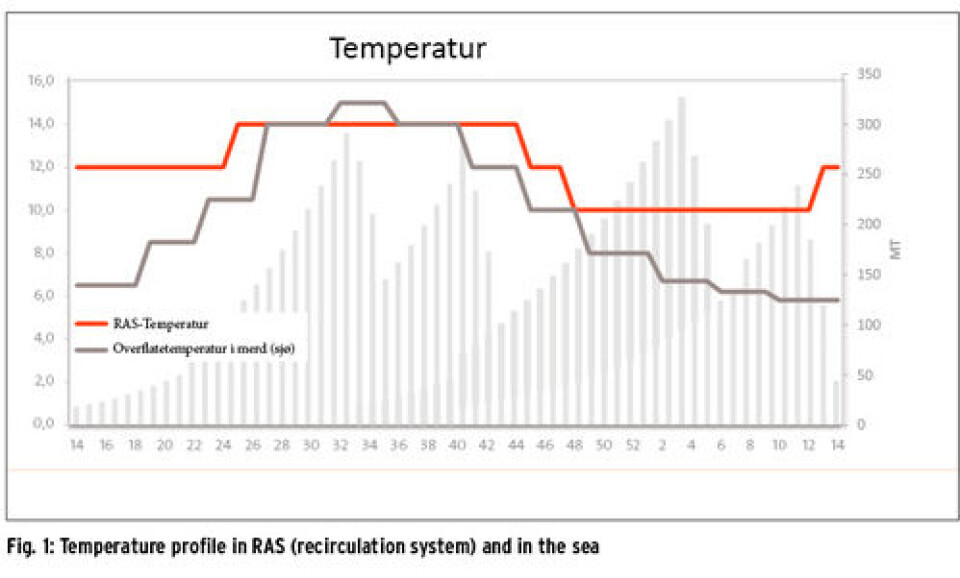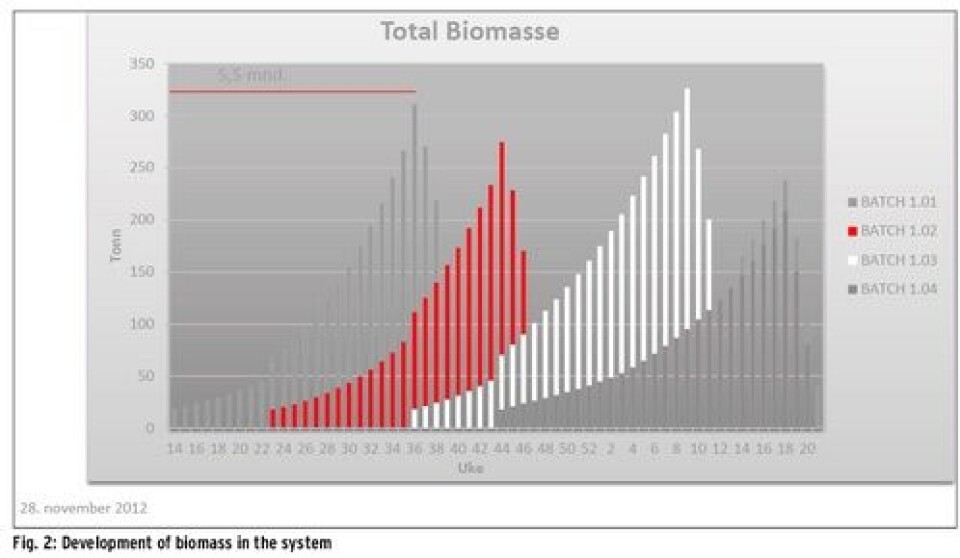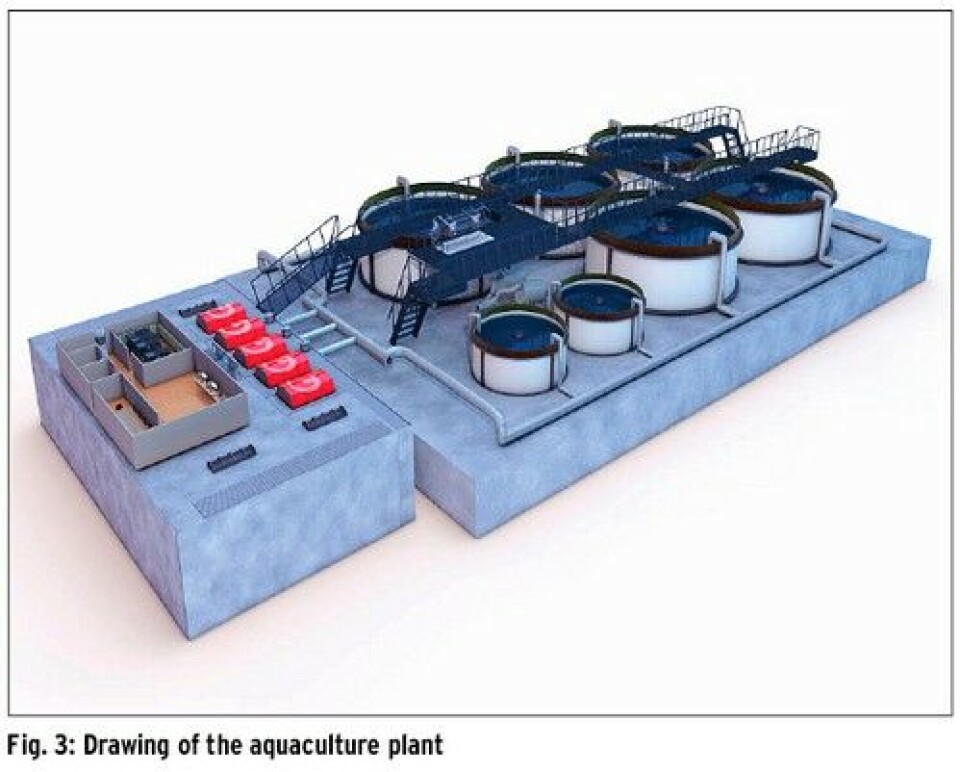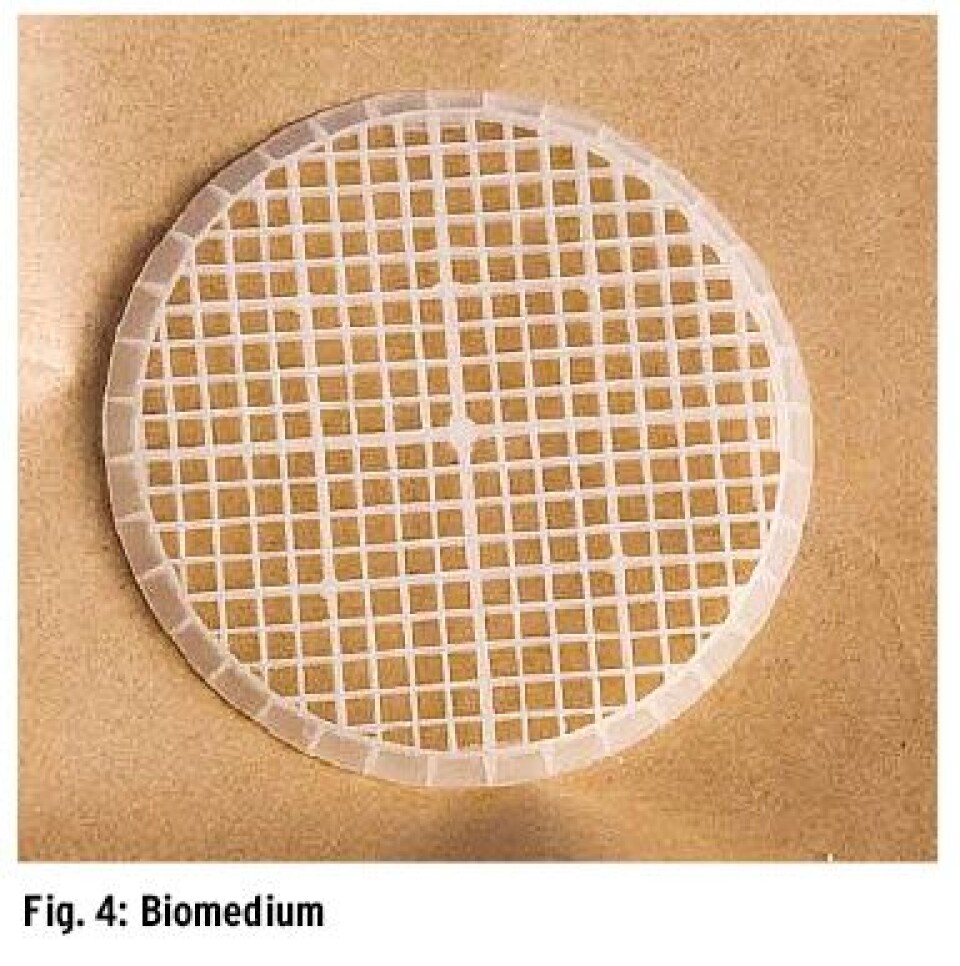Production of large postsmolt by recirculation

By Marius Hægh, Andreas L. Brunstad og Yngve Ulgenes, Krüger Kaldnes
Previously, it has been common to consider recirculation as a way to reduce the water consumption when limited water was available. Now the focus has shifted – correctly - more towards the view that recirculation controls and stabilizes the water environment in the production. Preliminary data and empirical knowledge from the industry point towards smolt from recirculation plants being more robust compared to those from flow-through plants. Does the production of post smolt in recirculation plants give other advantages?
We know that recirculation gives the following advantages: - Good temperature control with the possibility to steer the production towards seaready smolt at predetermined size and point in time - Disinfection of intake water and preventive health care measures mean good flexibility for handling of restrictions across regions related to sea launching - Production of fish in a controlled water environment up to about 1 kg will protect against challenges such as sea lice, transport stress, uncontrollable variations in water quality inside the netpen, etc. - Large postsmolt smolt will streamline volume utilization in cage systems and is thus likely to lead to more efficient use of zoning in Norwegian aquaculture.
Production regime With these given conditions, we have created the following scenario when it comes to the production of post-smolts with an average weight of about 1kg: - 4 groups of post-smolt are to be delivered during the course of a year: 2 in late winter/spring and 2 in late summer/autumn - Smolt is to be produced in recirculation plants up to a weight of 50-100g, followed by transfer to tanks with seawater, also with recirculation. Smolt has a weight of 75-150g and post-smolt is salmon with an average weight of up to 1kg. - The seawater tanks contain seawater only and the temperature is controlled, as depicted in Fig.1. In the same figure it is illustrated what temperature range can be expected in an open cage system. - The expected biomass development in the post-smolt system is depicted in Fig. 2, and is based on standard models for growth and feed type developed for fish size.

Technology Our design for an annual production of 1 million salmon of 1 kg with the given criteria, contains five 16m tanks with a water depth of 5m (ca 1000 m3) and two (maybe 3) 8m tanks with a water depth of 3m (ca 150m3). The total breeding volume of the plant is about 5.300 m3 (Fig. 3). The plant’s technological solutions enable efficient and gentle fish transport in separate tubes using appropriate equipment. Tanks are designed to achieve good hydraulics and effective particle transport away from the vessel volume. Large circulation through the system is required to obtain good water quality.
Water treatment and quality Water treatment in the recirculation system, shown in Fig. 3, is designed as a compact system, where Kaldnes®MBBR (Moving Bed Biofilter Reactor) is the basic component. Recirculated water is first filtered in large microfilters that effectively remove organic particles. It is then sent further to a biofilter (MBBR) with two chambers. The biological water purification is performed by bacteria growing on a biofilter medium (biofilm) and they use the waste products in the water as nutrition. An efficient biofilter needs access to oxygen, correct pH and alkalinity. The main function of the biofilter is to remove ammonia, which otherwise, at high concentration, will lead to ammonia poisoning of the fish.

MBBR is a self-reliant system The biofilter consists of tens of thousands of plastic chips where bacteria are living – and dying. They need a big surface area and constant access to nutrient rich water, which is achieved by constant mixing. The key to a successful biolfilter is to keep as many live bacteria as possible in it. In this context, the design of the plastic chips is of great significance. One characteristic of MBBR is that it renews itself without the need for cleaning or backwashing. Thus, the need for maintenance is minimal. From the biofilter the treated water is lead to an aerator where CO2 is removed. This is done by a counter-current aerator, where water trickles down through an air medium, and air is pumped up through a ventilation system simoultaneously. After aeration the water has an oxygen saturation of around 90-95%. Still, this is not enough and needs to be increased. For this one can either use big oxygen cones which are lying deep down in the ground or other low-pressure systems connected to each individual fish tank. With low pressure little energy is used to oxygenate all of the recirculated water current.
Sizing Knowledge about water treatment processes are cruicial for sizing and designing a biofilter correctly. A biofilter of wrong size can lead to significantly reduced stability in production. When sizing the capacity of water treatment, conservative estimates are used in order to ensure good quality at all times. When sizing a MBBR for seawater, it is important to bear in mind that the speed of nitrification is lower in seawater than in fresh water. This has to be compensated by the size of the biofilter. In addition to this, seawater makes it necessary to use material that does not corrode or wear.
Compact systems A recirculation system based on self-cleaning MBBR, effective particle removal, CO2 extraction and low pressure oxygen supply is an example of a very compact system that only needs a small area. The plants total design results in very low energy consumption for pumping of recirculated water, because the components are integrated into another. In a future aquaculture industry with larger volumes it is important to think in appropriately big terms – in order to achieve efficiency and profitability. In addition, it is important that the systems get a sustainable design. Thus we conclude that, with an understanding of the measures that need to be taken, compact recirculation systems will give a very efficient production of big post-smolt. A few, but important key words are: increased flexibility and control. This is also true for prioritized environmental challenges – e.g. sea lice.























































